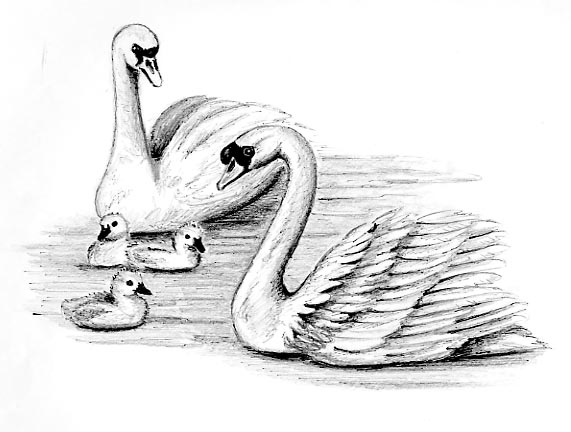
Dear Bird Folks,
Over the past few years I have been seeing more and more swans on local ponds and rivers. Someone told me that these handsome birds are actually a bad thing to have around. How could something so beautiful be bad?”
– Jessica, Dennisport
Hello Jess,
If good looks were all that one needed to get through life, then I could have retired years ago. It seems that there are more important qualities than great looks. What’s up with that? The swans that you are seeing are mute swans and they are indeed a very handsome bird. However, it is not their looks that gets the swans into trouble. It is their size, behavior and where they come from that puts the swans on the outs with many people. The mute swans were brought to this country from Europe in the 19th century to beautify the grand estates of the big shots living on Long Island. Their population has grown from a few birds years ago to over 10,000 birds that live along the East Coast today. These swans, like most of us, are not native, they have been introduced, and like all introduced things, they’ve caused problems for the native populations. Being an introduced species puts the mute swan in the same category as the house sparrow, the starling, the park pigeon and pilgrims.
Mute swans should not be confused with our two native swans. The trumpeter swan is a western bird, that is never seen around here. The tundra swan is a common bird in the Chesapeake Bay area, but only rarely stops to visit the Cape. The mute swan is the swan that holds its neck in a graceful “S” shape and is our only swan with an orange bill. And let’s not forget about the size. The mute swan has a wing span of up to 8 feet and can weight close to 50 pounds – that equals the weight of about 7,895 hummingbirds, or 593 cardinals, or three small cups of movie theater soda. The mute swans, indeed, could be the world’s heaviest flying bird.
Mute swans have a large territory and they are very aggressive. They will prevent native waterfowl from nesting on an entire pond or a wetland. These swans have killed native ducks that wandered too close to their nest. In some areas of Maryland, mute swans have moved into tern and skimmer colonies, not to nest, but just to hang out and molt. The massive swans were oblivious to the smaller nesting birds and trampled most of the eggs, causing the terns and skimmers to desert the colony. I’ve also read about a similar thing happening with black tern colonies in Michigan. Terns and skimmers are endangered and mute swans are thriving.
The only thing that we can do to slow the swan growth is refrain from feeding them. Mute swans show little fear of humans and are happy to take bread or any other food that we offer them. The winters are tough on swans and without supplemented food, the population could thin out naturally.
Remember, Jess, people don’t dislike the swans, they are just concerned about what the long-term effects will be on our native birds. Now is a good time to consider the outcome before real damage is done. It is already too late to save us from other introduced things, like pigeons, the West Nile mosquito or reruns of Benny Hill.